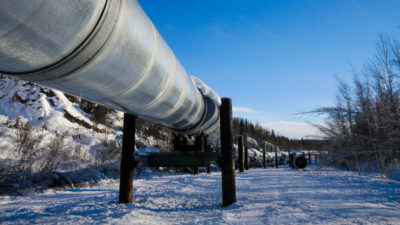There is a very fine and often dangerous line between a value trap and a value investment, and the distinction could mean the difference between a successful investment and gut-wrenching losses.
Currently, Canadian Oil Sands Ltd. (TSX:COS) prices are slightly off levels that have not been seen since 2004. Shares have recently recovered mildly from a decline that saw the price fall 72% from the top in September 2014 to the bottom in February 2014, and it begs the question—is this a low-risk entry opportunity, or is there still more downside to come?
To answer this, let’s take a look at some of the major factors influencing Canadian Oil Sand’s valuation and a common method of valuing the stock.
Cost savings and oil prices will drive cash flows going forward
Canadian Oil Sands is a pure-play synthetic crude production company, with 100% unhedged crude production. As a result, the company has long sold itself as a means for investors to get direct, leveraged exposure to the price of oil. With this in mind, their future cash flows are dependent on two things—the price of oil, and their ability to realize cost reductions.
Starting with cost savings, there is a reason to be optimistic. With regards to capital expenditures, the company has largely completed several major projects, including rebuilding of its Mildred Lake mine trains, which commenced operations at the end of 2014. The result is that the company will see $369 million in capital expenditures savings in 2015 relative to 2014.
Even more importantly, the company is planning to reduce operating expenses, largely through increasing reliability at their Syncrude mine. Over the past several years, Syncrude has seen its utilization steadily decline, falling from 84% in 2010 to 73% in 2014.
This has resulted in production decreases for Canadian Oil Sands, and in turn, higher operating costs per barrel, since fixed operating costs are spread across fewer barrels of production. Fortunately, the recent major projects completed are all geared towards increasing reliability, and Canadian Oil Sands is now targeting utilizations of 80-90%.
With 2015’s target of 80% utilization, Canadian Oil Sands should see operating costs of $40/bbl, down from a high of $48/bbl in 2014. This will reduce Canadian Oil Sands overall break-even cost to US$44.21/bbl, well below current WTI prices.
In addition to this, most pricing forecasts are expecting slight-to-modest increases in oil prices both this year and next. The U.S. Energy Information Agency is anticipating US$52.15/bbl prices this year, and US$70/bbl in 2016. If these are accurate, Canadian Oil Sands would see $349 million in cash flow in 2015, and $805 million in cash flow in 2016.
This would result in a low forward price-to-cash flow ratio of 6.9 for 2016, which is slightly below their average. What does this mean? It means that if Canadian Oil Sands can realize their cost reductions, and if oil prices increase slightly, the stock is currently undervalued and downside is limited.
Looking at the fair value of their reserves confirms this
Using the U.S. Energy Information Agencies price forecast, oil prices are likely stabilized and should see some growth over the next two years.
In addition, according to company filings, Canadian Oil Sands total proved plus probable reserves are currently valued at about $9.2 billion (after adding in a 10% discount rate and subtracting income taxes). Subtracting the company’s $1.9 billion in debt from that leaves a net asset value of about $7.3 billion.
On a per-share basis, this works out to about $15 per share. With Canadian Oil Sands currently trading at near $11.50, the company is trading at 76% of the net value of its reserves.
Essentially, this means that at current prices, investors can purchase $1 of Canadian Oil Sand’s reserves for $0.76, which is a bargain, especially considering its 40+ year reserve life. Given the long-life nature of these reserves, the potential for increases in reserve life, and the high likelihood that oil prices are at— or near—a bottom, current prices are a fairly low-risk entry point.







